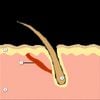community Finasteride/dut. causes NAFLD,IR,diabetes,kidney dysfunction is it correct.
Hair loss discussion mentions treatments like Finasteride, Dutasteride, and Minoxidil. Users share experiences, side effects, and advice on using these treatments.
